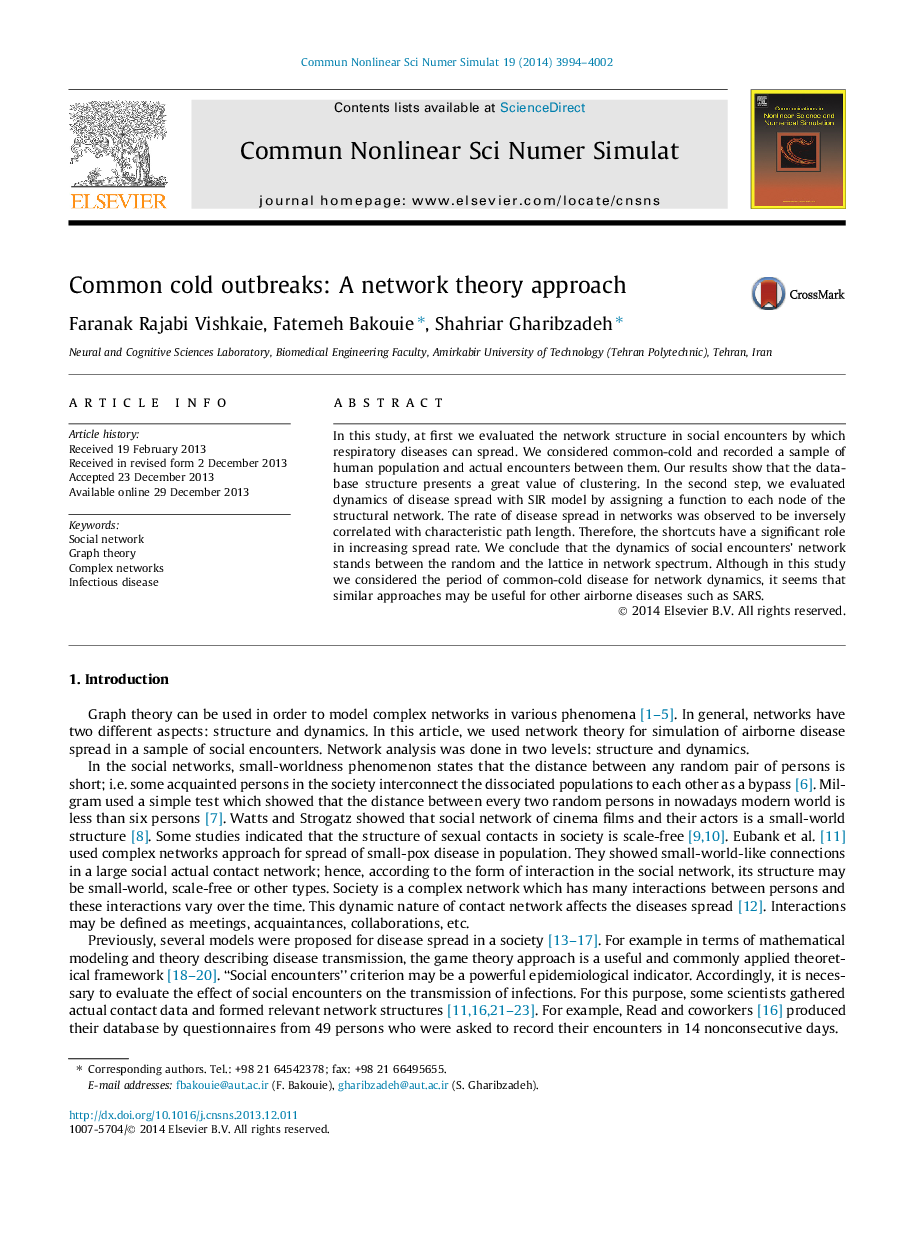| Article ID | Journal | Published Year | Pages | File Type |
|---|---|---|---|---|
| 758772 | Communications in Nonlinear Science and Numerical Simulation | 2014 | 9 Pages |
•We studied a social network in which airborne diseases spread.•Our results showed high clustering in corresponding social network structure.•The rate of disease spread is inversely correlated with path length.•The rate of disease spread is between that of random and lattice network.
In this study, at first we evaluated the network structure in social encounters by which respiratory diseases can spread. We considered common-cold and recorded a sample of human population and actual encounters between them. Our results show that the database structure presents a great value of clustering. In the second step, we evaluated dynamics of disease spread with SIR model by assigning a function to each node of the structural network. The rate of disease spread in networks was observed to be inversely correlated with characteristic path length. Therefore, the shortcuts have a significant role in increasing spread rate. We conclude that the dynamics of social encounters’ network stands between the random and the lattice in network spectrum. Although in this study we considered the period of common-cold disease for network dynamics, it seems that similar approaches may be useful for other airborne diseases such as SARS.
